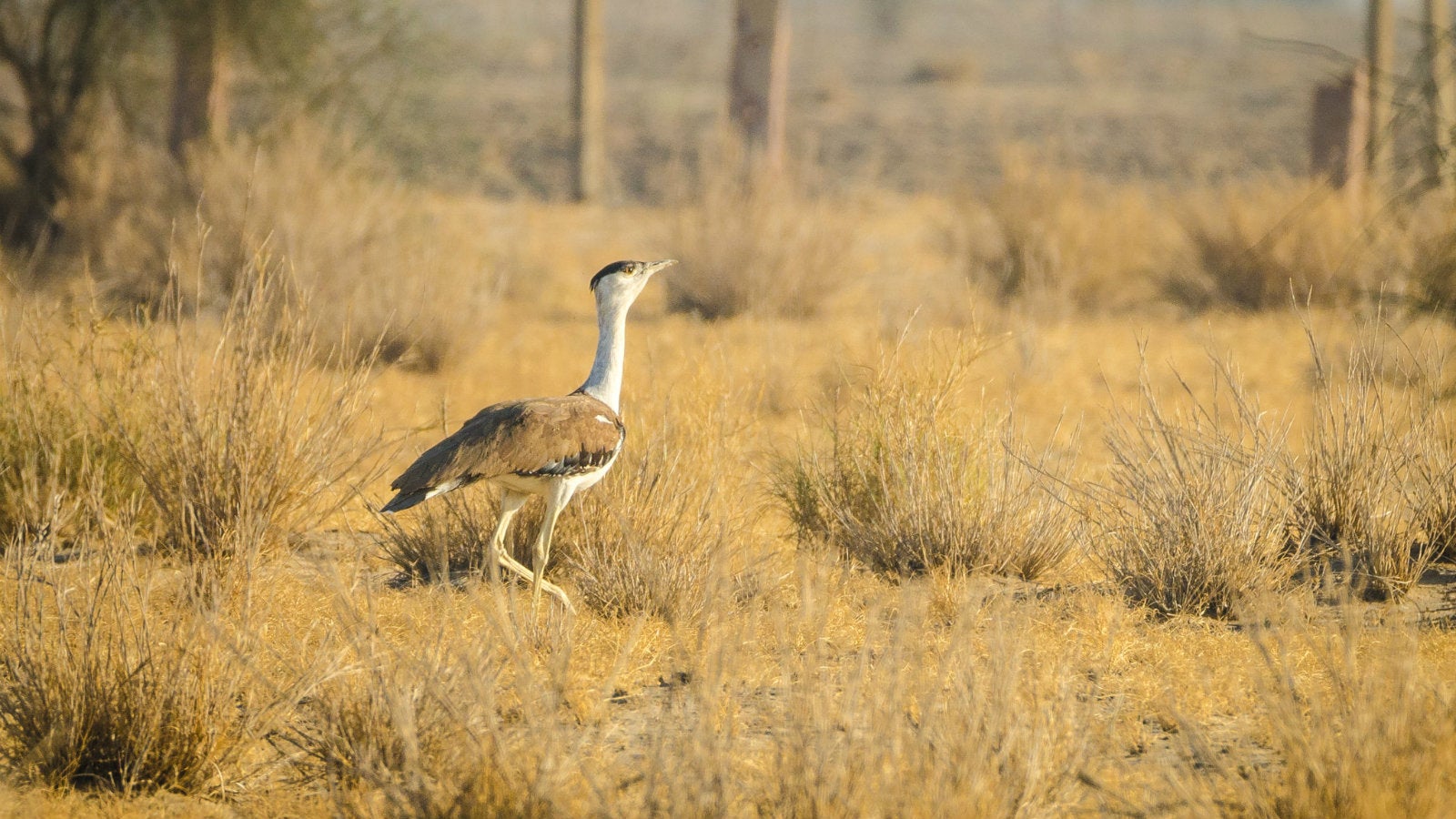India’s renewable energy push is wiping out the last of the great Indian bustards
India’s big push towards renewable energy is wiping out a critically endangered bird. So great is the devastation that in the western Indian state of Gujarat, one of the last sanctuaries of the great Indian bustard, only one male member of the species is left.


India’s big push towards renewable energy is wiping out a critically endangered bird. So great is the devastation that in the western Indian state of Gujarat, one of the last sanctuaries of the great Indian bustard, only one male member of the species is left.
This, wildlife conservationists say, is due to wind turbines and solar power projects taking over the bustard’s ever-shrinking grassland habitat in Gujarat, Rajasthan, and Maharashtra.
Between April 2017 and March 2018, India added over 11,700 megawatts (MW) of renewable energy capacity, a big step forward towards the government’s ambitious goal of 175,000 MW by 2022. But with more power lines criss-crossing their habitat, the bustards risk collision, entanglement, and electrocution.
Anecdotal research has found that at least 10 have died over the past decade because of this—two of them were the only adult breeding males in parts of Maharashtra. Last year alone, charred carcasses of four birds were found in Thar, Rajasthan, which hosts the largest remaining population of bustards, making it kind of the last hope for the species’ revival.
“Given their small population size, the current level of losses due to power lines is most significant and will lead to a faster decline,” said Sutirtha Dutta, a scientist at the Wildlife Institute of India who has worked on bustard conservation for years.
There are currently only about 150 bustards left in India. One of the world’s heaviest flying birds, bustards can weigh up to 15 kilograms, with males being slightly bigger than females. These birds also have narrow frontal vision. Put together, this means a bustard in full flight can’t detect power lines early enough for it to avoid inevitable death. Without enough adult males to breed, the prospects of reviving their minuscule population get bleaker.
Back in 1969, an estimated 1,200 bustards were found throughout western India. But habitat loss due to road construction and changing agricultural practices reduced their numbers to around 600 by 2000.
Great Indian bustards were first listed as an endangered species by the International Union for Conservation of Nature in 1994. Following a rapid population decline, in 2011, they were reclassified as critically endangered. The following year, India set up Project Bustard, a conservation initiative inspired by Project Tiger. In 2013, the government of Rajasthan embarked upon the Rs12 crore ($1.74 million) Project Great Indian Bustard. But despite all these efforts, the great Indian bustards have vanished from 90% of their former range.
The Narendra Modi government’s pet renewable energy project is the latest threat, though it really doesn’t have to be that way. Constructing underground power lines or using “bird diverters” to make overhead wires more visible in key bustard habitats could go a long way in addressing the problem, Dutta says.
Until that happens, though, the future of the great Indian bustard is up in the air.
Feature image by Kesavamurthy N on Wikimedia Commons, licensed under CC BY-SA 4.0.